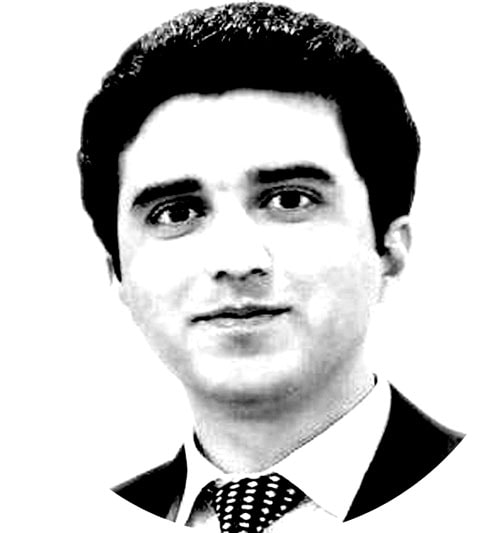Munawar Mahar
THE Pakistan Democratic Movement’s (PDM) high-voltage Jalsa in Multan witnessed the formal foray of Aseefa Bhutto Zardari into the violent political arena of Pakistan. Arguably, she emerged as the showstopper of the power show timed to coincide with the 53rd Foundation Anniversary of the Pakistan Peoples Party (PPP). The political debut backed by her fiery speech generated a great deal of political buzz. Some political pundits went so far as to term her as the political reincarnation of her martyred mother. Whether it was an act of political baptism or a guest appearance remains to be seen from her future political activity of equal significance.
Multan Jalsa aside, there is greater space for her in the party and the politics of the country. Benazir Bhutto’s political stature and the recent rise of Maryam Nawaz testify to the fact that the Pakistani electorate loves to rally behind courageous and capable women leaders connecting with the masses through bold political position and posture. In the misogynist society and polity of ours, the feminine gender turns out to be a plus point contributing to political appeal and personal charisma. If she is here to stay and play a lead political role in tandem with her brother, she will have to surmount several challenges thrown up by the changing demographic, socio-economic and political dynamics of the country.
Undoubtedly, it is going to be an arduous political journey for her. Being a daughter of BB is not only a great political advantage but also a heavy political responsibility obligating her to live up to the political standards and ideals her mother lived and died for. Thus, by default, the political bar is set higher for the daughter of Shaheed Benazir Bhutto. This brings us to the million-dollar question as to what the challenges are to be taken on and the opportunities to be tapped into by her.
The biggest challenge warranting her immediate attention is the organizational and political decay of PPP increasingly out of touch with the masses-the fountainhead of all power for a political leader. Arguably, the greatest challenge to the party is the party itself — its fast-changing political character. Today’s PPP is not famed for being the party that once was driven by the politics of resistance espoused by its founder and BB. Elitism and political expediency are what have come to characterize it in the post-Benazir Bhutto politics of Pakistan. The post-BB erosion of the national appeal of the party is reflective of the political alienation of the party’s vote base outside rural Sindh where lack of an organic political alternative is what has helped it hold the political ground. She has to repair and re-establish the ruptured bond with the disenchanted voters and masses.
To that effect, regaining the lost political ground in Punjab holds the key to the revival of political fortune at the national level. In the face of the growing popularity of her eventual and natural political nemesis Maryam Nawaz Sharif, the political revival in the province is going to be a colossal challenge requiring Herculean efforts and mammoth investment of political capital. Improving the performance profile, re-establishing the lost contact with the masses and the critical return to the ideological roots will go a long way in the much-needed political renaissance of the PPP.
Amidst the formidable challenges, the opportunities abound if she is capable of capitalizing on them for gaining political mileage. First, the space for the progressive and left-wing politics, created by the political contraction of her very own party, remains unoccupied. She can exploit that political void to her political advantage. Second, Pakistan is one of the youngest countries as 64% of its population is below the age of 30. The unprecedented youth bulge means millions of social media-savvy young voters that can be targeted and attracted by her if she can sell her as a youth representative and the hope for a better tomorrow.
Third, women constitute 48.76% of the population and the rising tide of the feminist movement is illustrative of the festering gender disparity. She needs to tap into this massive woman vote bank by offering them a ‘new deal’ underpinned by the promise of greater women emancipation and empowerment. Last but not the least, over 30% of Pakistanis are condemned to suffer from multidimensional poverty whose eradication demands the prioritization of human security.
In the context of the COVID-19 devastating lives and livelihoods, security against hunger, joblessness, disease, and indignity has assumed greater importance and urgency than ever before. Thus, championing the cause of human security will put her on the same page with the commoners of the country.
In the long run, she has to evolve out of the political shadow of her mother and create her own political identity and brand like her mother who has left her indelible mark on the politics of Pakistan. Today’s Pakistan is politically and demographically a different polity and society from the country BB lived in and engaged with. In sum, Aseefa ought to mirror the socio-political and economic zeitgeist of her own times if she wishes to capture the electorate’s imagination.
—The writer is a columnist and PhD scholar (IR) pursuing his pioneering doctoral research on ‘Human Security and SDGs In Pakistan’, at NUML University Islamabad










